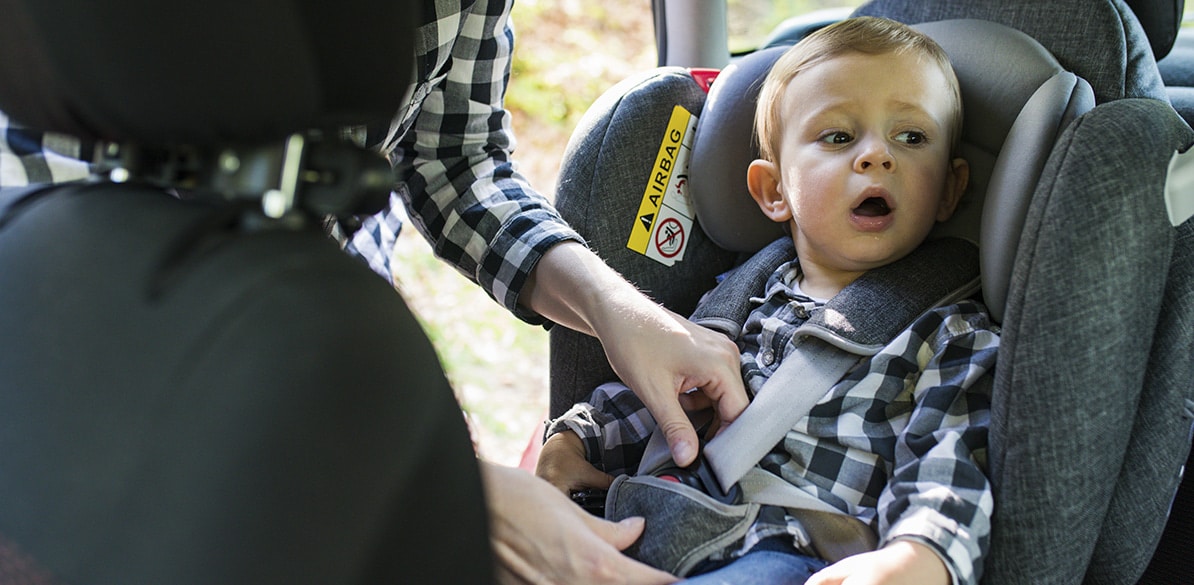Multi-group seats: a wise purchase?
We analyze the safest child restraint strategies

Road Safety
One of the questions to be considered when buying a child restraint system (CRS), and probably the most difficult to answer, is the question of what range of heights the child seat should include.
There are many different types of chairs on the market, we must always choose approved chairs and, therefore, they should always offer us the same thing. But are they actually all equal? We are going to look at what the best choice for us is.
When we buy our first child seat, we should already have worked out a product purchasing strategy for the next 12 years. Yes, that may seem a bit over the top, but it will actually save us money when it comes to buying the product and we will know when we need to change it.
Let’s review the most common strategies:
BABY CARRIER – CONVERTIBLE SEAT FROM 61 TO 105 CM – BOOSTER SEAT WITH BACKREST. This strategy makes the child seat adaptable to all stages of the child’s growth, making it an excellent solution for transporting the child.
REAR-FACING SEAT UP TO 105 CM – BOOSTER SEAT WITH BACKREST. This strategy is a variation of the previous one, replacing the baby carrier with a convertible seat from 40 to 105 cm. The seat’s adaptability to the baby is somewhat less.
BABY CARRIER – REAR-FACING CHAIR UP TO 125 CM – BOOSTER SEAT WITH BACKREST. This strategy increases the time the child will travel facing backwards. It is without doubt the approach that will offer the highest level of safety.
REAR-FACING SEAT UP TO 125 CM – BOOSTER SEAT WITH BACKREST. This strategy sacrifices the infant carrier for a rear-facing seat from 40 to 125 cm, increasing the time the child will travel facing backwards. The safety level is maintained, but we reduce the adaptability to the occupant and the comfort of the CRS.
So far we have defined the strategies that we recommend with an appropriate balance between safety, adaptability and comfort.
There are, however, other strategies that are very popular but, as we mentioned, they are less recommendable:
MULTI-GROUP FROM 40-150 CM. Just as we do not buy clothes that will fit us throughout our lives, we should not buy a chair that will last our children until they are 150 cm tall. The only advantage of this strategy is the cost. On the other hand, the level of adaptability of the products, the level of safety, and the guarantee of durability of this type of products means that they are not recommendable.
BABY CARRIER – FORWARD-FACING SEAT UP TO 105 CM. BOOSTER SEATS WITH BACKREST. This is a very common strategy, but for the safety and comfort of our babies it is much safer and more advisable for them to be rear-facing until they are at least 4 years old.
The reason we do not recommend multi-group products is that they do not guarantee a sufficient level of safety due to their lack of adaptability. It is impossible to cover all the restraint, deflection and energy absorption requirements for all ages (from 0 to 12 years) adequately, and to do this with a reasonable level of comfort.
We must also wonder about whether a safety device can be used in a car for 12 years, since neither the approval tests nor the manufacturers guarantee that the device will correctly restrain the child after such a long period of time.
For this reason, as we have seen, the use of 40-150 cm multi-group seats is by no means the most recommendable option. Indeed, in terms of both safety and comfort they do not match other strategies that guarantee greater adaptability to the occupant and, consequently, their safety.
